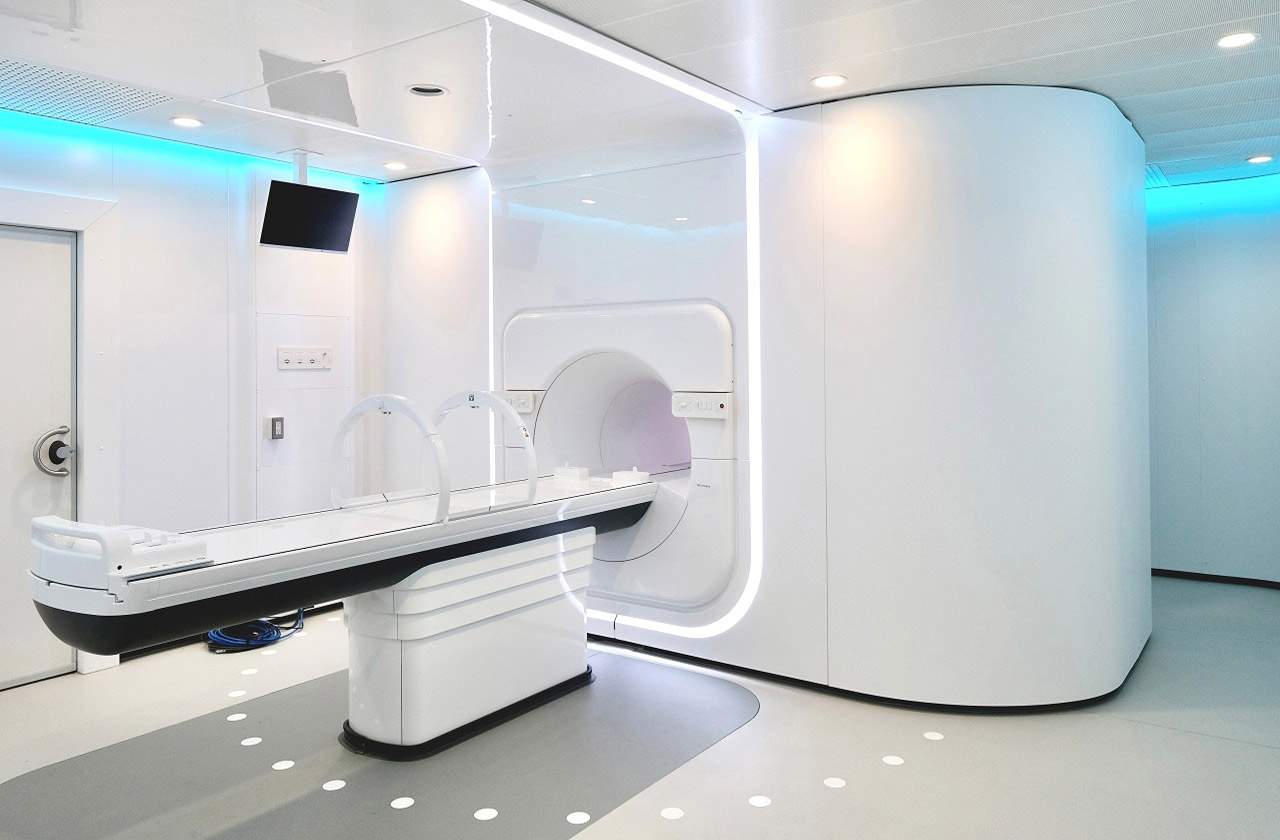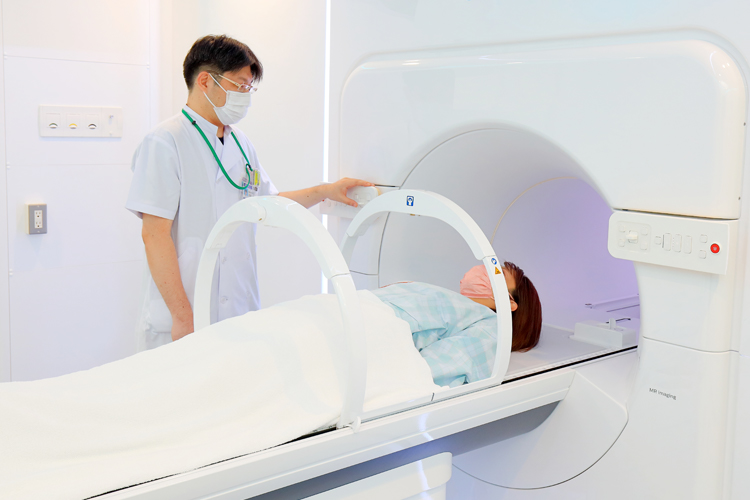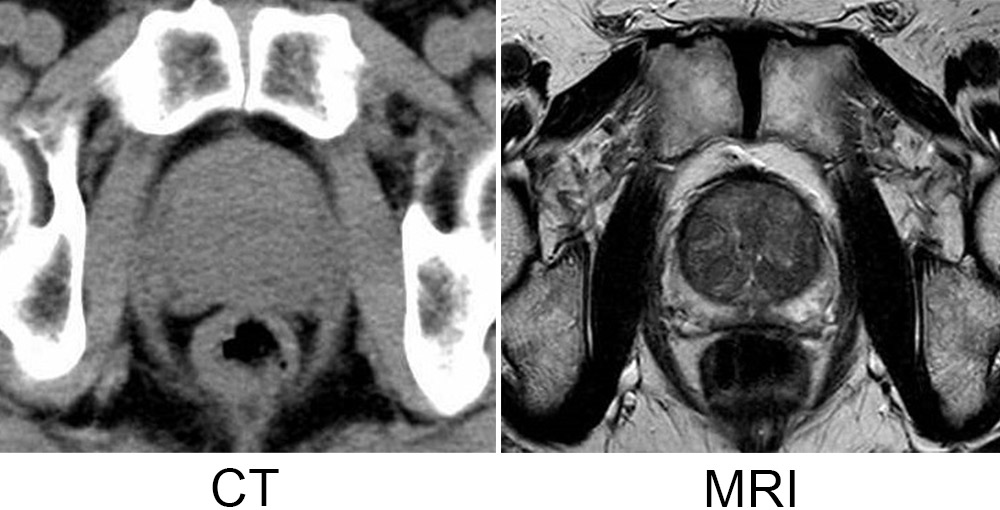Information for Patients
About MR LINAC
MR LINAC now operational to allow treatment with the high-precision cancer radiotherapy
On December 14, 2021, our hospital began offering treatment using a high-precision cancer radiotherapy system called MR LINAC, which combines MRI (with a high magnetic flux density of 1.5 tesla) and LINAC (linear accelerator: radiotherapeutic device). MR LINAC is a groundbreaking radiotherapeutic device with a high resolution made possible by high magnetic flux density. The device enables medical professionals to observe lesions inside the body in real time while irradiating tumors.

More precisely irradiating lesion through real-time monitoring

Cancer radiotherapy is a treatment to kill cancerous cells by irradiating a lesion over a period of days. The effect and side-effects of the treatment are confined to the body areas that are subject to irradiation, with little weakening of immune strength. Radiotherapy plays a major role in alleviating pain and bleeding in patients with advanced cancer, in addition to cancer treatment.
The MR LINAC that our hospital has introduced is capable of accurately irradiating lesions while monitoring them in real time with high-resolution MRI images. It enables us to minimize the effect on healthy tissues, even when cancerous and healthy organs move due to breathing and other causes. In a nutshell, safe and high-precision radiotherapy can improve treatment outcomes, reduce side-effects, and shorten the period of treatment.
Conventional radiotherapy (LINAC)

The location of a lesion is confirmed with CT images taken beforehand. Because the lesion's location moves due to breathing and changes in posture, a margin of 10-20 millimeters surrounding the lesion is also designated for irradiation. Since a wider area is irradiated, healthy organs are affected.
Adaptive radiotherapy (MR LINAC)

The lesion is precisely irradiated, while the site of the lesion and healthy organs are monitored in real time with the high-resolution MRI. The radiotherapy has little effect on healthy organs surrounding the lesion, thus allowing precise irradiation with high doses and fewer treatment sessions.
Advantages of MR LINAC

MRI is capable of viewing inside the body more clearly.
Cancer radiotherapy using MR LINAC has the following advantages.
- Imposing a reduced burden on the body and generating high effects
- Cancerous lesion and healthy tissues can be viewed more clearly compared with CT
- Radiotherapy can be conducted while "viewing" the lesion in real time
- Being able to directly monitor the lesion can safely narrow down the range of irradiation
- Capable of responding immediately to changes in the location and size of the cancer
- Capable of better confirming the effect of the treatment compared with CT
- No radiation exposure when confirming the area to be irradiated
As radiotherapy has the following characteristics, the introduction of MR LINAC is expected to provide more options for patients:
- Widely used for treating cancers in the breast, lung, prostate, head, neck, esophagus and cervix, etc.
- Can be used to treat the elderly and patients suffering from complications
- Leaves the functions and shape of healthy organs intact
- Allows patients to continue work and other tasks during the treatment as they are treated mainly on an outpatient-basis.
- Can be combined with surgical and/or drug therapies.
Frequently asked questions
- Q
- Is MR LINAC's use restricted based on the type of cancer or the patient's age?
There are no particular restrictions. It can be used for all types of cancers that can be treated with radiotherapy. It can be used for a wide range of purposes: to cure cancer, downsize cancer to prolong a patient's life, and alleviate pain caused by cancer.
Patients who are unable to go through MRI because of metals and medical equipment planted in their body cannot receive this treatment.
Also, patients with cancers that are unsuitable for being treated with radiotherapy cannot receive this treatment.
- Q
- Can a patient receive the treatment on an outpatient-basis?
In principle, hospitalization is not a must for this treatment; patients can receive it on an outpatient basis. Each session of irradiation requires 40 minutes to one hour. The treatment period depends on the type and condition of cancer, but in many cases, the treatment spans one to two weeks.
- Q
- Is the treatment covered by health insurance? How much does it cost to receive it?
It is covered by health insurance, just like conventional radiotherapy. If patients who bear 30 percent of their medical expense take stereotactic radiotherapy, the out-of-pocket fee is over 200,000 yen, but less than 300,000 yen. If patients are going through intensity modulated radiotherapy, the fee is 10,000 yen multiplied by the number of treatment sessions.
- Q
- What should I do if I want to undergo this treatment?
Consult with the medical institution that you regularly visit to obtain a referral letter. Please make an appointment with our hospital by fax, while also faxing the referral letter.
Fax appointment page for medical institutions(*in Japanese)
Radiology department


